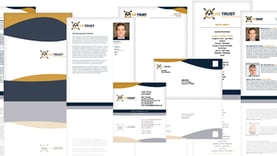The economic times of today leave many financial professionals searching for ways to find new prospects. One way to help fill up your appointment calendar throughout the year is to team up with a CPA. Accountants are typically eager to become partners, as it can be a beneficial relationship for both of you.

Here are six steps that could potentially help you establish a successful working relationship with a CPA that will benefit everyone; the client, the accounting professional, and you.
Step 1: Prepare your interview with the CPA
Before you meet with a CPA, you need to prepare. Create a bio sheet or brochure that best describes your services and added value. This, along with your business card, is the only thing you need to leave behind. If you don’t have a bio sheet or brochure but wish to create one, this is an opportunity for you to review all your marketing programs and update them as needed. Along with this, you need to perfect your elevator speech.
Keep in mind; they need to understand how you will help the client relationship and the steps you will take to enhance their reputation. A great question you can ask the CPA is, “Are you concerned with what’s best for your clients?”
Step 2: Develop a plan
Create a list of professionals in your area and do your homework on this list. Check their social media sites, find common bonds and interests, and determine their fit on your team. Develop a drip campaign of scheduled contacts with these industry professionals. Consider upcoming meetings you may be hosting such as an agent training for your down line agents or a client seminar and invite these professionals to attend.
Step 3: Work your plan
Consider unscheduled in-person meetings. Keep them short; 10 minutes or less. You can also schedule these meetings if preferred. It’s important to have a purpose such as providing client approved pieces and discussing new tax developments.
Step 4: Do unto others
A crucial step in building and maintaining a strong network is making an effort to give quality referrals. You have to give referrals if you expect to get them. Consider coming in with a list of clients that are in need of a CPA. Taking the time to dig deep into your current and prospective client base allows you to better pinpoint the clients you are looking for and improve your success of offering a combined solution that fits their personal and financial needs.
Many clients will find a package deal of expertise very appealing and will hopefully rely upon both of you and your individual knowledge as their needs and goals change.
Step Five: Be patient
Be realistic – relationships take time. Don’t expect referrals right away. A trusting, quality relationship is not one you create overnight, but putting forth effort will build a strong foundation.
Step Six: Monitor results
You should monitor results over time and consider repeating steps 1-5 as needed. Keep the dialogue with the CPA office open and ongoing. Consider scheduling standing quarterly meetings to discuss industry updates and the relationship.
Putting effort into this relationship can help create a profitable referral system. When combined with deliberate planning and a strategy, you can create a solid foundation where your referral network can continue to grow.
Now that you've discovered the 6 reasons to partner with a CPA, discover the 6 ways you can improve your IUL sales success by downloading our eBook.






